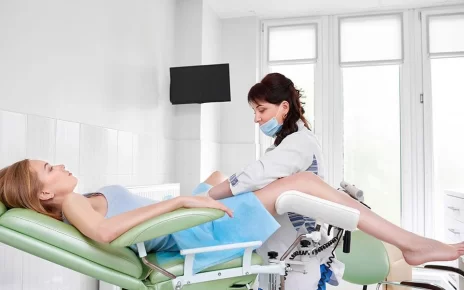For many people, just the thought of visiting the dentist brings unease. Whether it’s fear of pain, anxiety about procedures, or memories of unpleasant past experiences, dental care has historically been a source of stress for many individuals. Thankfully, Warminster, PA gentle dentistry is changing that narrative. By prioritizing patient comfort and utilizing modern techniques and technologies, gentle dentistry is revolutionizing the way we approach oral healthcare.
What is Gentle Dentistry?
Gentle dentistry is an approach to dental care that focuses on minimizing discomfort, addressing anxiety, and making every patient feel at ease during their visit. It combines compassionate care with cutting-edge technologies and techniques designed to reduce pain and stress. This approach isn’t just a trend, it’s a commitment to providing a better, more patient-centered experience.
The Evolution of Gentle Dentistry
Dentistry has come a long way over the past few decades. Traditional tools and methods often led to long, uncomfortable appointments that left many patients hesitant to return to the dentist. However, advancements in technology and changes in patient care philosophies have sparked the evolution of gentle dentistry.
Today, dental professionals understand that patient comfort is just as important as the quality of care provided. This shift has resulted in the adoption of innovative tools and treatments aimed at improving the overall experience for patients, whether they are undergoing a routine cleaning or a complex procedure.
Modern Techniques and Technologies in Gentle Dentistry
Here are just a few examples of modern techniques and technologies that are making gentle dentistry a reality:
1. Laser Dentistry
Laser technology has been a game-changer for many dental procedures. Instead of using traditional drills, dentists can now use laser tools to perform procedures like cavity fillings, gum contouring, and even root canals. These tools are precise, minimally invasive, and often pain-free, which can significantly reduce recovery time and discomfort.
2. Digital Imaging
Traditional dental X-rays required patients to bite down on uncomfortable plates, making the process unpleasant for many. Digital imaging, on the other hand, uses small, comfortable sensors and produces high-quality images instantly. Not only is this method more comfortable, but it also uses less radiation than traditional X-rays.
3. Sedation Options
For patients with dental anxiety, sedation dentistry has become an invaluable tool. Options like nitrous oxide (laughing gas), oral sedatives, and IV sedation can help patients relax during their visit. These methods are safe, effective, and customizable based on the patient’s level of anxiety and the complexity of the procedure.
4. Electric Handpieces
Replacing traditional dental drills, electric handpieces are quieter and more precise, reducing vibrations and noise that can trigger anxiety in patients. This small improvement goes a long way in creating a calmer atmosphere during dental appointments.
5. Comfort-Focused Tools
Gentle dentistry also emphasizes the use of tools and methods that prioritize patient comfort. For example, numbing gels are used before injections to ensure minimal discomfort, while ergonomic chairs and soothing music help patients feel more at ease while receiving treatment.
The Benefits of Gentle Dentistry for All Patients
Gentle dentistry isn’t just a more comfortable option, it’s a life-changing approach for many patients, particularly for certain demographics:
Children
For kids, visiting the dentist can be intimidating, especially if it’s their first visit or they’ve had unpleasant experiences in the past. Gentle dentistry, with its emphasis on non-invasive techniques and a friendly approach, helps make dental visits a positive experience. This can foster a lifelong commitment to oral health and reduce the likelihood of children developing dental anxiety.
Patients with Dental Anxiety
Dental anxiety affects millions of people, often leading them to avoid necessary care. Gentle dentistry provides solutions like sedation options, compassionate communication, and anxiety-friendly environments, helping these patients receive the care they need without fear or discomfort.
Seniors
Older adults often face unique dental challenges, such as gum sensitivity and dental prosthetics. Gentle dentistry addresses these needs with techniques that minimize discomfort while focusing on preserving oral health in the long term.
Conclusion
Gentle dentistry has truly transformed the patient experience. With modern tools, cutting-edge technologies, and a compassionate approach, dental visits no longer need to be a source of stress or discomfort. Whether you’re a parent wanting to set a positive example for your child, someone dealing with dental anxiety, or simply someone who values comfort, gentle dentistry offers a solution that can make all the difference.





